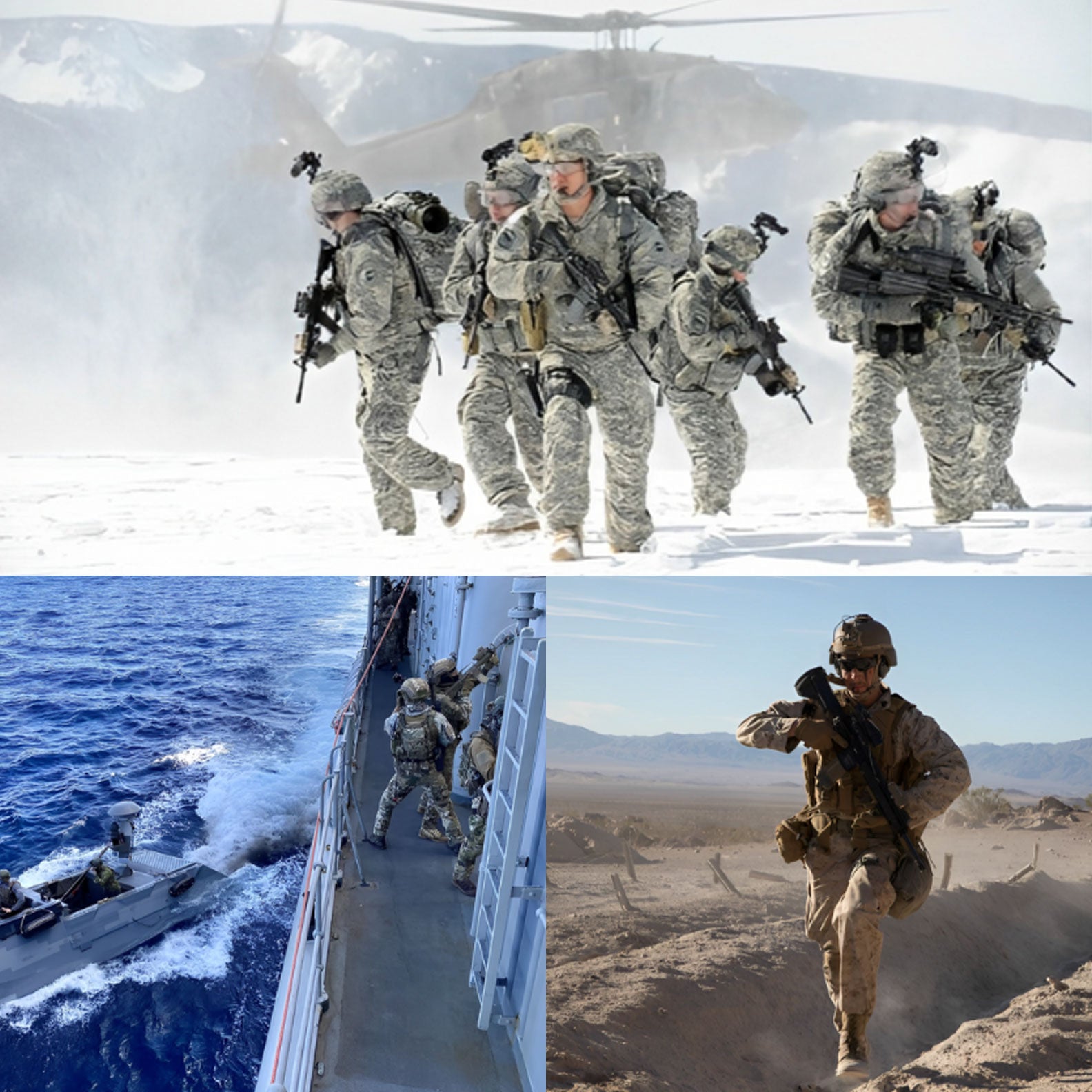
Body Armor in Specialized Environments: Navigating the Challenges of Maritime, Desert, and Arctic Warfare
Aug 28, 2023
In the vast expanse of our planet, from the deep blue oceans to the vast deserts and the icy poles, the environments are as diverse as they are challenging. For the brave men and women who operate in these extreme conditions, the right gear is not just about comfort—it's a matter of life and death. Body armor, a critical component of their protective gear, has to be adapted and optimized for each unique setting.
In the ever-evolving landscape of modern warfare and defense, body armor plays a pivotal role in ensuring the safety of our soldiers and law enforcement personnel. However, as we venture into specialized environments—open seas, scorching deserts, or icy Arctic terrains—the challenges for body armor multiply.
In this article, the CAG (Custom Armor Group) team explores the intricacies of designing and utilizing body armor in these extreme conditions. We'll delve into each environment's unique challenges and the innovative solutions developed to address them. From buoyancy issues in maritime operations to insulation needs in the Arctic, the demands are varied, but the goal remains: to protect and empower those who protect us.
Maritime Operations
Challenges:
- Buoyancy: Traditional body armor can be heavy, making it difficult for soldiers to stay afloat if they fall into the water.
- Corrosion: Saltwater can corrode certain materials, reducing the longevity and effectiveness of the armor.
- Mobility: Maneuvering on a ship or underwater requires flexibility, which can be hindered by bulky armor.
Solutions:
- Lightweight Materials: Protective and lightweight materials ensure that soldiers can move and swim more efficiently.
- Corrosion-resistant Coatings: Modern armor can be treated with coatings that resist the corrosive effects of saltwater.
- Modular Designs: Armors that can be quickly adjusted or removed can benefit maritime operations, allowing soldiers to adapt to changing conditions.
Desert Warfare
Challenges:
- Heat and Hydration: The intense heat of desert environments can cause soldiers to become dehydrated quickly, especially if they're wearing heavy gear.
- Sand Abrasion: Sand can get into armor components, causing wear and potentially compromising protection.
- Camouflage: Traditional camouflage might not be effective in desert landscapes.
Solutions:
- Breathable Materials: Using materials that allow better air circulation can help reduce the risk of heat-related illnesses.
- Sealed Components: Ensuring that armor components are sealed and resistant to fine particles can prolong the life of the gear.
- Desert Camo Patterns: Specialized patterns can help soldiers blend into sandy environments.
Arctic Conditions
Challenges:
- Cold Protection: Besides ballistic protection, soldiers need insulation from extreme cold.
- Mobility in Snow: Moving through deep snow or ice can be challenging with traditional armor.
- Visibility: Snow and ice can reflect sunlight, making it difficult for soldiers to see, especially if their visors or goggles fog up.
Solutions:
- Insulated Layers: Modern body armor can include insulation layers to keep soldiers warm.
- Flexible Joint Areas: Designing armor with more flexibility around the joints can help soldiers move more quickly in snowy conditions.
- Anti-fog Coatings: Special coatings can prevent visors and goggles from fogging up, ensuring clear vision.
Navigating our planet's diverse terrains demands courage, skill, and protective gear tailored to each unique challenge. As the boundaries of where our soldiers operate expand, so does the need for specialized body armor. Recognizing and addressing the distinct demands of maritime, desert, and Arctic environments ensures that our soldiers are not only shielded from ballistic threats but are also adeptly equipped to handle the rigors of their surroundings.
For those facing the unpredictable challenges of these extreme conditions or any other environment, the expertise of the CAG team is just a call away. Reach out to the team at CAG for comprehensive support across any environment or threat your operations might encounter. Protecting those who protect us is our utmost priority.
← Older Post Newer Post →

